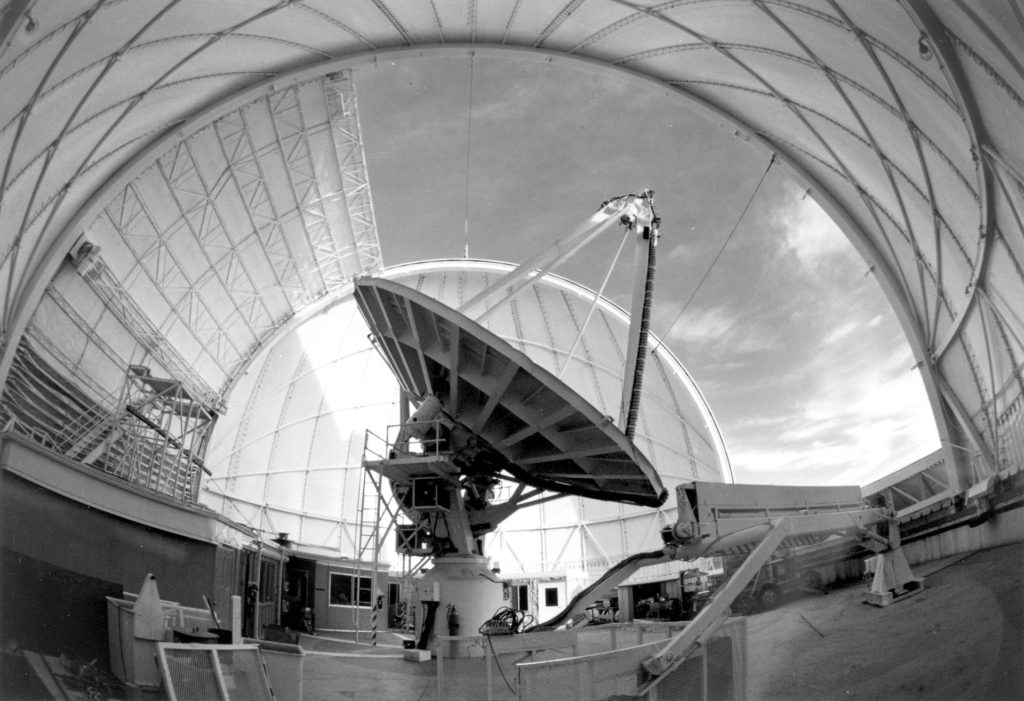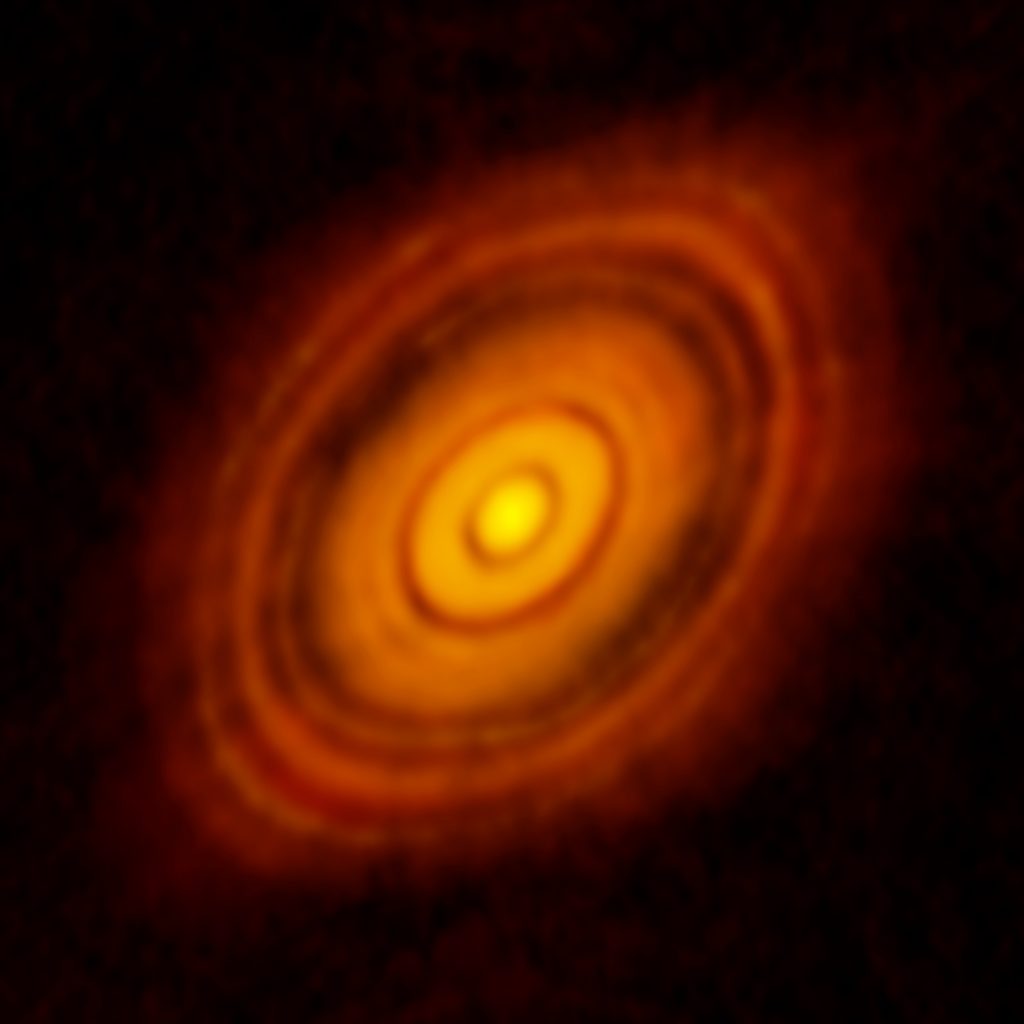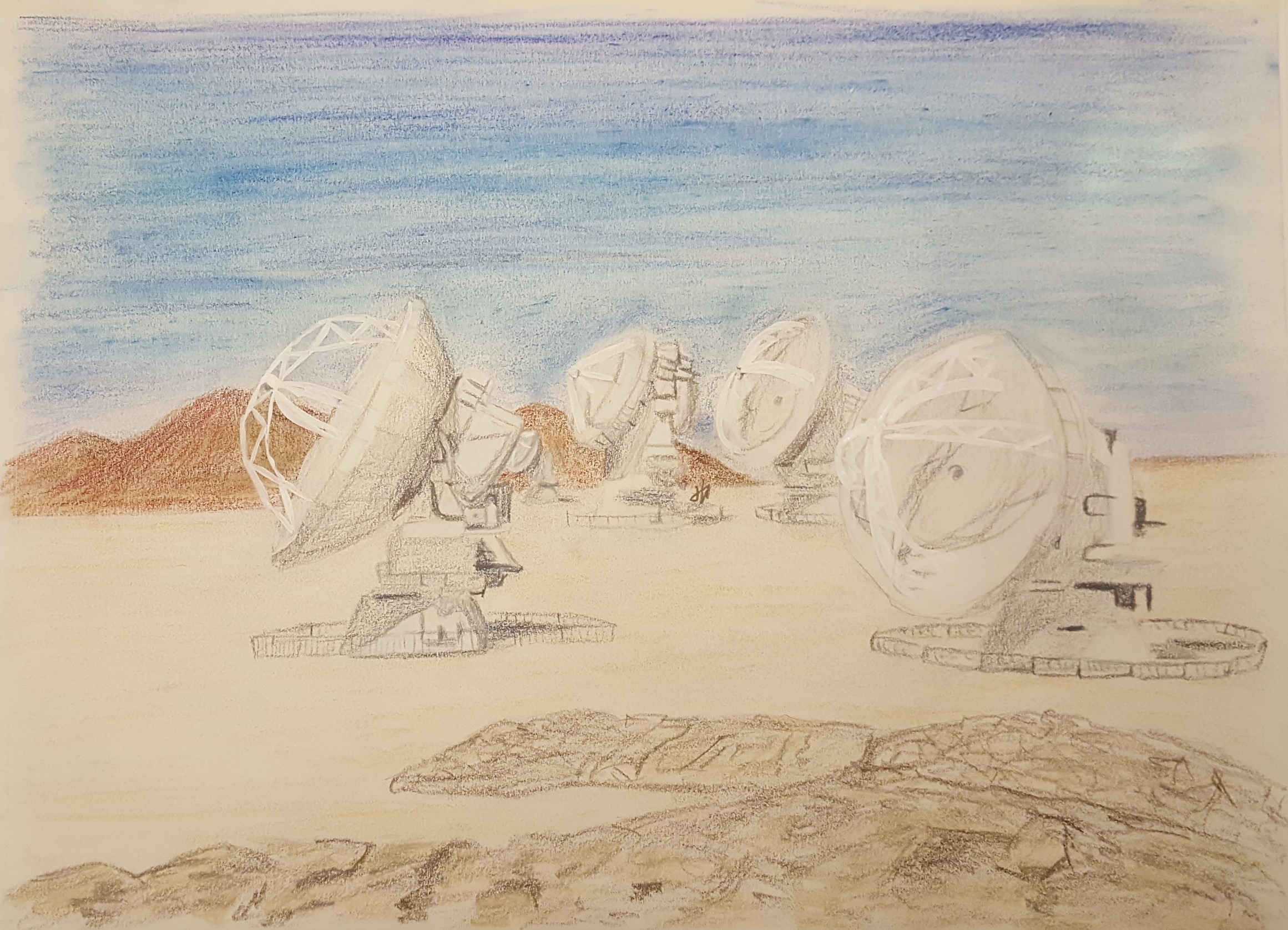Carbon monoxide (CO) is a simple molecule, just one carbon atom closely bound to one oxygen. Neither of these elements is anywhere near as abundant as those of hydrogen or helium in the Universe, but they are the next two most abundant elements, comprising a bit less than one percent of the atoms in the cosmos. And since they are formed in the nuclear furnace of large stars, carbon monoxide tends to be found in interstellar clouds where stars are forming. There are other molecules that lurk in stellar nurseries, but carbon monoxide has strong spectral lines in the millimeter wavelength range of radio light, which can pass through dense clouds of interstellar gas. Much of our understanding of stellar and planetary origins comes from our observations of carbon monoxide.
But millimeter astronomy is a technically challenging field. While astronomers have been detecting molecules in space since the 1930s, it wasn’t until 1970 that radio astronomers at Kitt Peak Observatory first detected carbon monoxide. Even then it was clear that CO observations could lead to astronomical breakthroughs, but it would take a new radio telescope to capture the kinds of images astronomers truly desired. Building this new telescope was a goal of Paul Vanden Bout. His early work in millimeter-wavelength astronomy was groundbreaking, and as the director of NRAO, he had a vision of a telescope built for millimeter astronomy.

After the first detection of CO, the 36-foot (12-meter) telescope at Kitt Peak Observatory became a popular choice for observing the molecule. With its arid environment and elevation of nearly 7,000 feet, Kitt Peak is an excellent location for millimeter astronomy. Water vapor absorbs millimeter-wavelength light, so you need a location that is high and dry. With the success of the 36-foot observations, a proposal was developed for a 25-meter radio telescope to be located at Kitt Peak or a similar observatory. This plan was rejected by the NSF in 1982, but the power of millimeter astronomy was so compelling that talks began for a “millimeter Very Large Array (mm VLA).
Inaugurated in 1980, the VLA demonstrated just how effective telescope arrays could be, and it quickly found its place as the most powerful radio telescope in the world. But it generally operated at wavelengths longer than a millimeter. The mm VLA would have a similar design and would allow astronomers to capture high-resolution images of carbon monoxide and other molecules. Possible locations for the site included the American Southwest, Hawaii, and the Atacama region of Northern Chile.
It was decided that the Plateau of Chajnantor in Northern Chile would be the best location for the array. Located at an elevation of 5,000 meters in one of the driest parts of the world, Chajnantor also had an excellent view of the dense central region of the Milky Way. However, the cost of building an array in such a remote location threatened to end the project in the 1990s. At the same time, the European Southern Observatory had plans for its own radio telescope array in Chile, the Large Southern Array (LSA). Through a series of social and political challenges too complex to detail here, the two projects eventually merged to become the Atacama Large Millimeter/submillimeter Array (ALMA).

Construction began on ALMA in 2003. Built in collaboration with the ESO, Chile, and Japan, it was inaugurated in March 2013. The first high-resolution image ALMA released was one of HL Tauri, a young star with a protoplanetary disk. The image was more detailed than the best Hubble images, showing a banded structure with gaps suggesting the formation of planets around the star. It was clear the discoveries of ALMA would be revolutionary.
The disk of HL Tauri was first confirmed through millimeter observations of carbon monoxide in the disk in 1986. It was part of the motivation behind the dream to build a powerful millimeter-wavelength radio array. It took nearly three decades to achieve that dream, but it was a dream of Paul Vanden Bout for a bit longer.
You can read more about the history of ALMA in The ALMA Telescope: The Story of a Science Mega Project by Paul A. Vanden Bout, Robert L. Dickman, and Adele L. Plunkett.
Dr. Vanden Bout has also been awarded the 2023 Karl G. Jansky Lectureship in recognition of his outstanding contributions to the advancement of radio astronomy.






